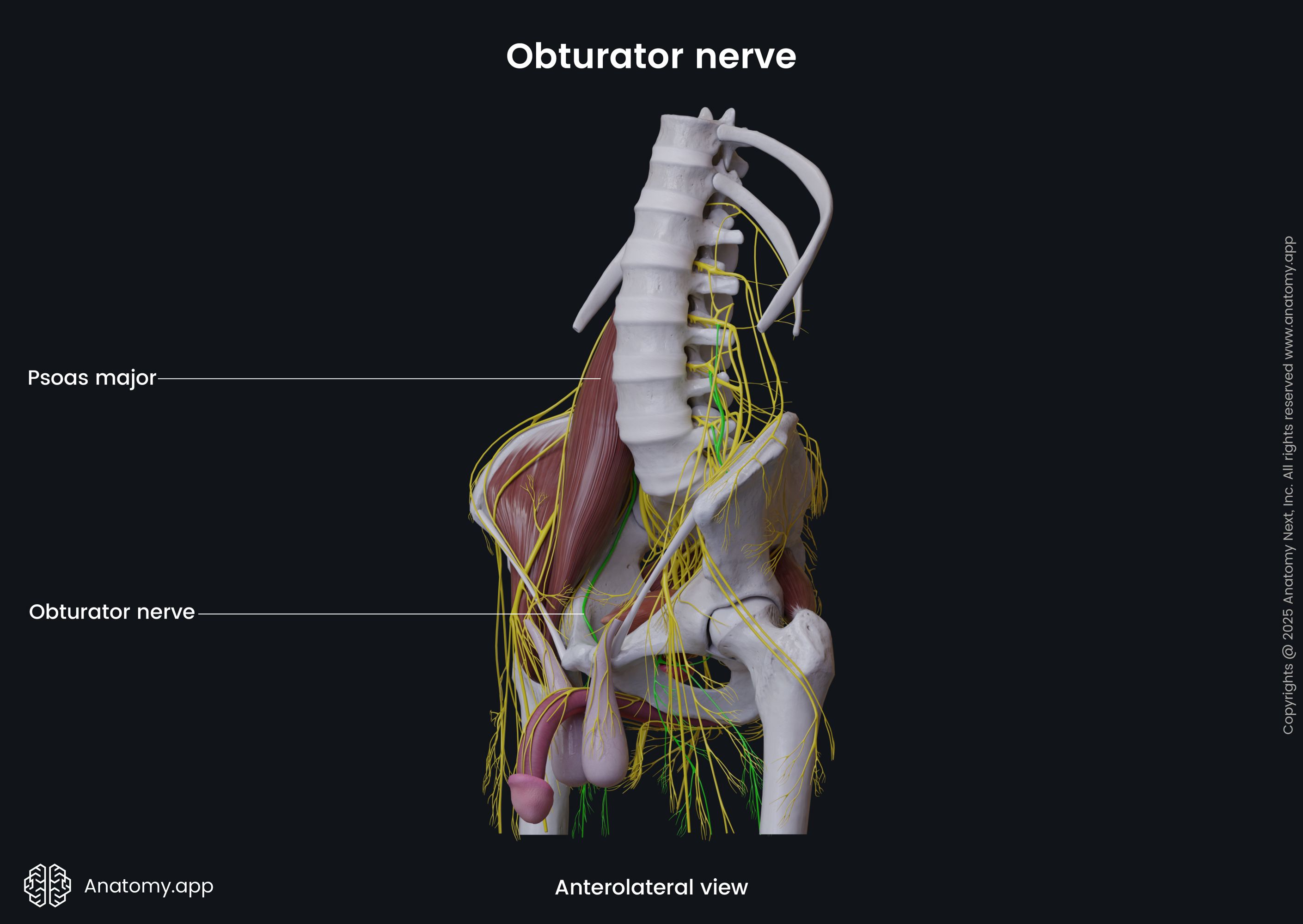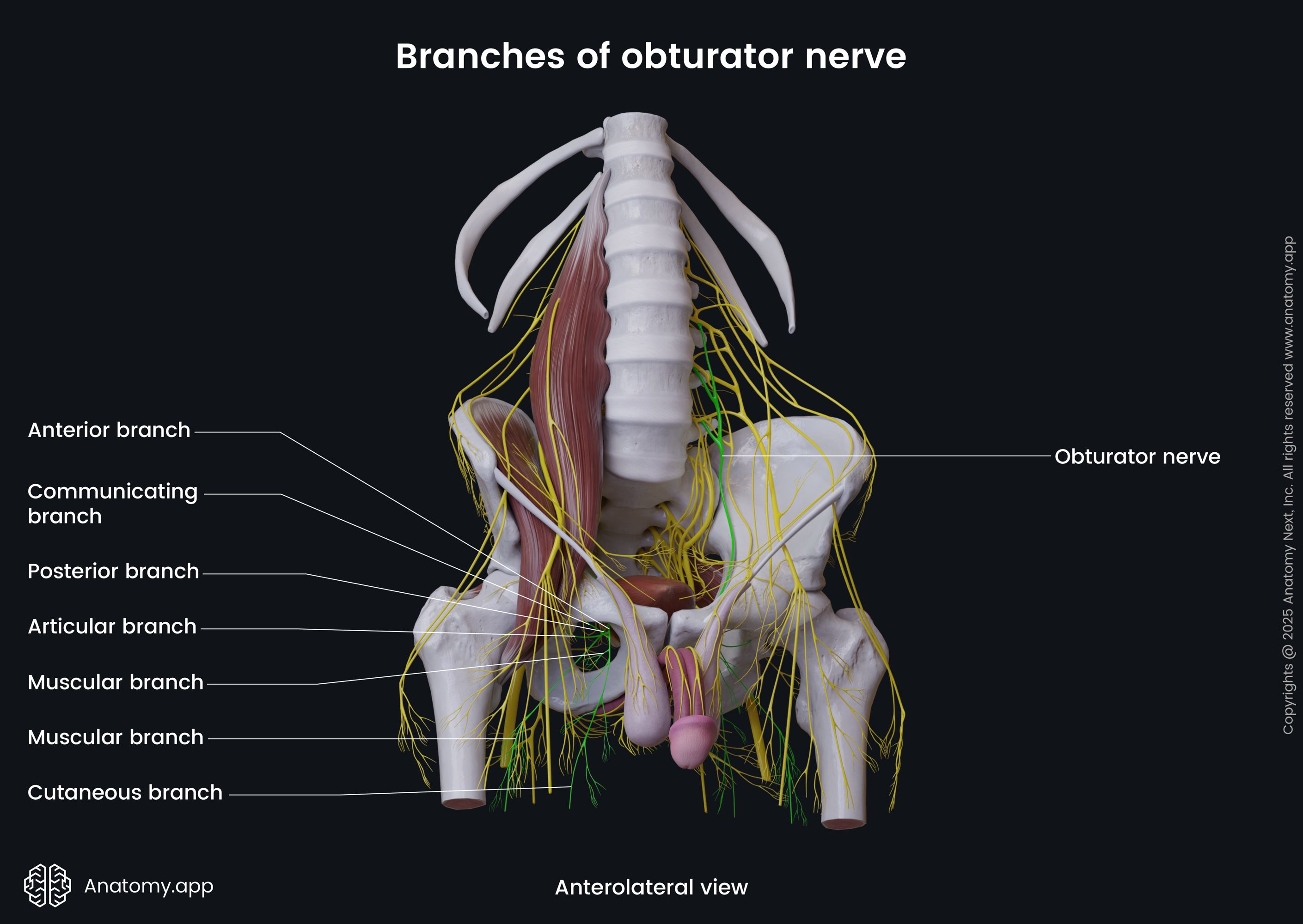- Anatomical terminology
- Skeletal system
- Joints
- Muscles
- Heart
- Blood vessels
- Lymphatic system
- Nervous system
- Respiratory system
- Digestive system
- Urinary system
- Female reproductive system
- Male reproductive system
- Endocrine glands
- Eye
- Ear
Obturator nerve
The obturator nerve (Latin: nervus obturatorius) is mixed nerve that originates from the lumbar plexus and innervates the muscles and skin in the medial region of the thigh.

The obturator nerve arises from the ventral rami of the second, third and fourth lumbar nerves (L2 - L4). The obturator nerve emerges from the medial side of the psoas major, then it crosses the linea terminalis and passes by the lateral wall of the lesser pelvis. The obturator nerve enters the obturator canal and divides into two terminal branches: the anterior and the posterior branch.
The anterior branch of the obturator nerve is larger than the posterior, it runs between the adductor brevis and adductor longus muscles, then penetrates the fascia lata at the middle third of the medial surface of the thigh and continues as the cutaneous branch. The anterior branch of the obturator nerve innervates the adductor brevis, adductor longus, pectineus and gracilis, also the skin at the medial part of the thigh as far as the knee joint.

The posterior branch of the obturator nerve runs posterior to the adductor brevis. The posterior branch of the obturator nerve innervates the adductor magnus and external obturator muscles, and the hip joint.